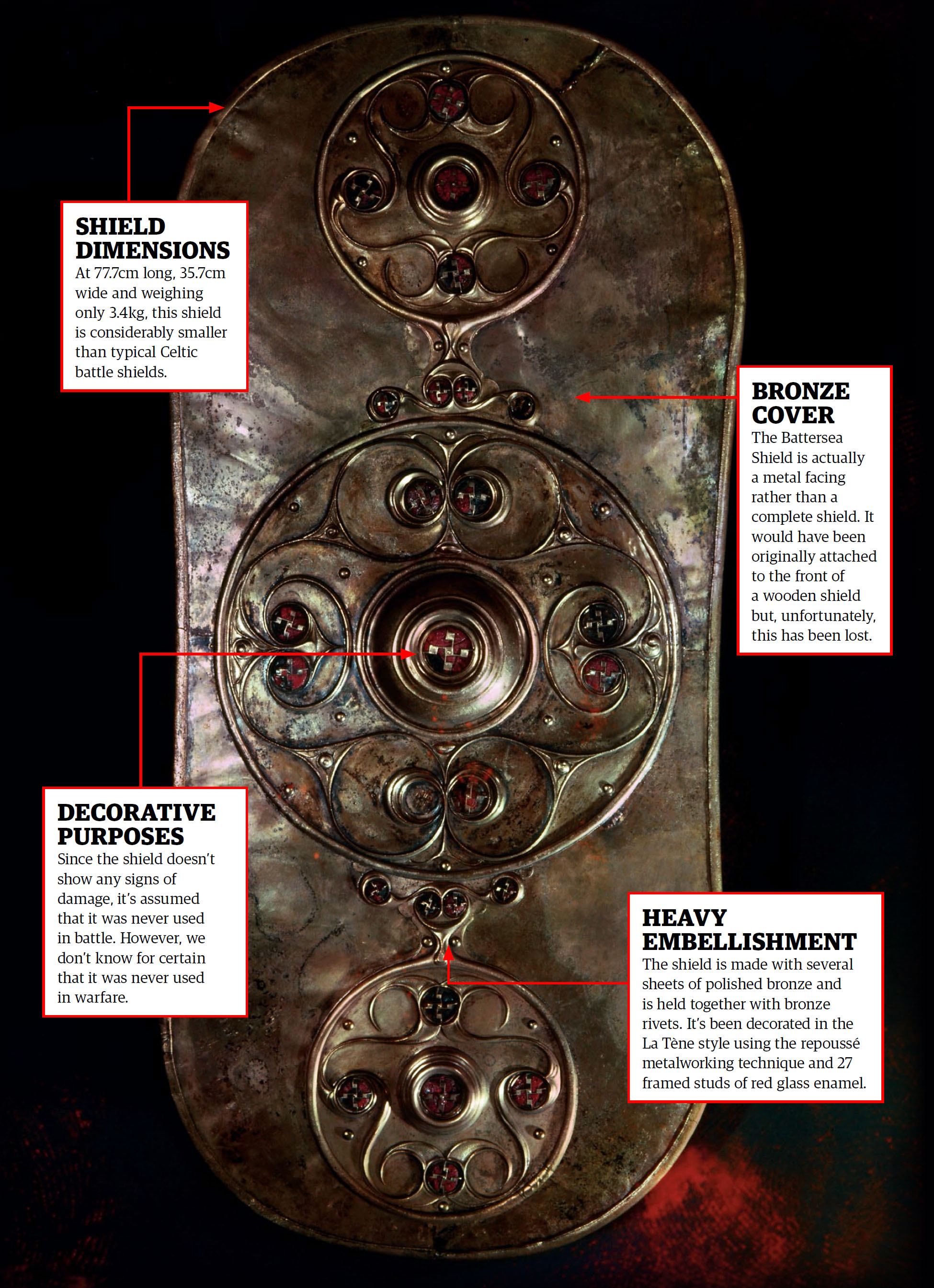Archeological evidence indicates that during the Iron Age Celtic warriors were prestigious, high-status members of that society. Many of them were buried with elaborately decorated weapons, horses and even chariots, presumably for ceremonial or religious reasons. As a result, the majority of shields are often discovered in burial sites.

© Getty Images
Celtic shields were usually made of wood such as oak and covered in leather. It’s thought that shields were generally lightweight, to make them more comfortable for the warriors to hold and carry. Typically, shields were oval in shape but they could also be circular, rectangular or even hexagonal. The differences in shape and size can be seen geographically, as shields from Northern Europe are usually long and flat while those found in the Mediterranean tend to be shorter and rounder.